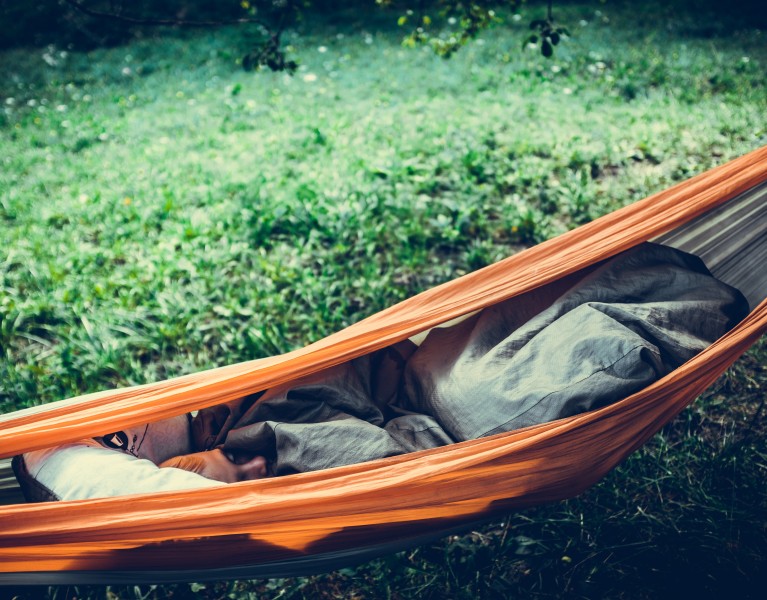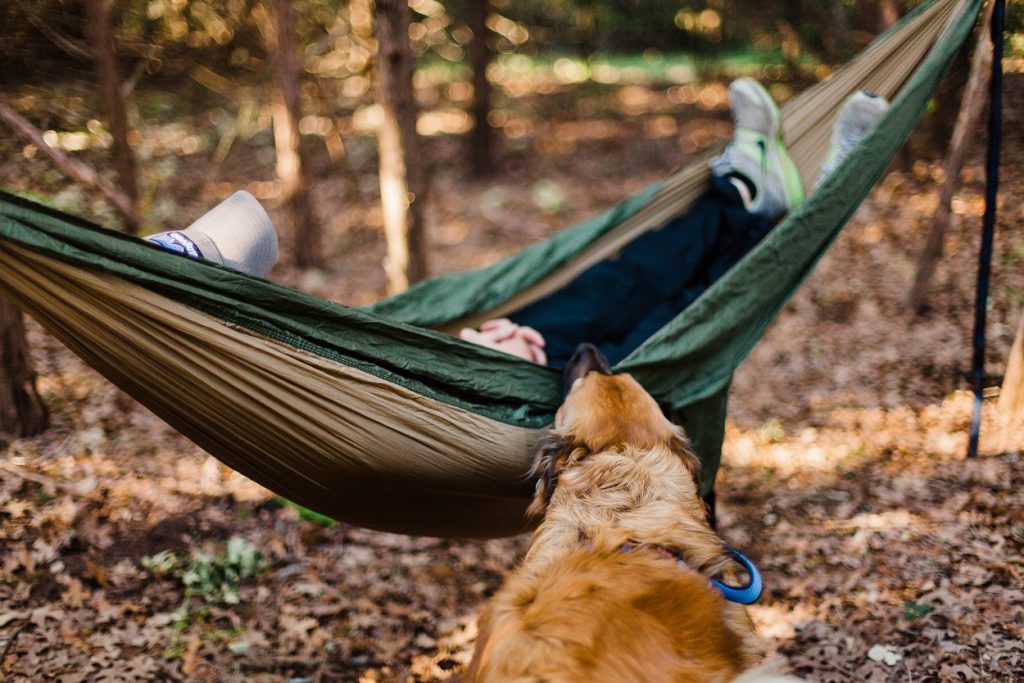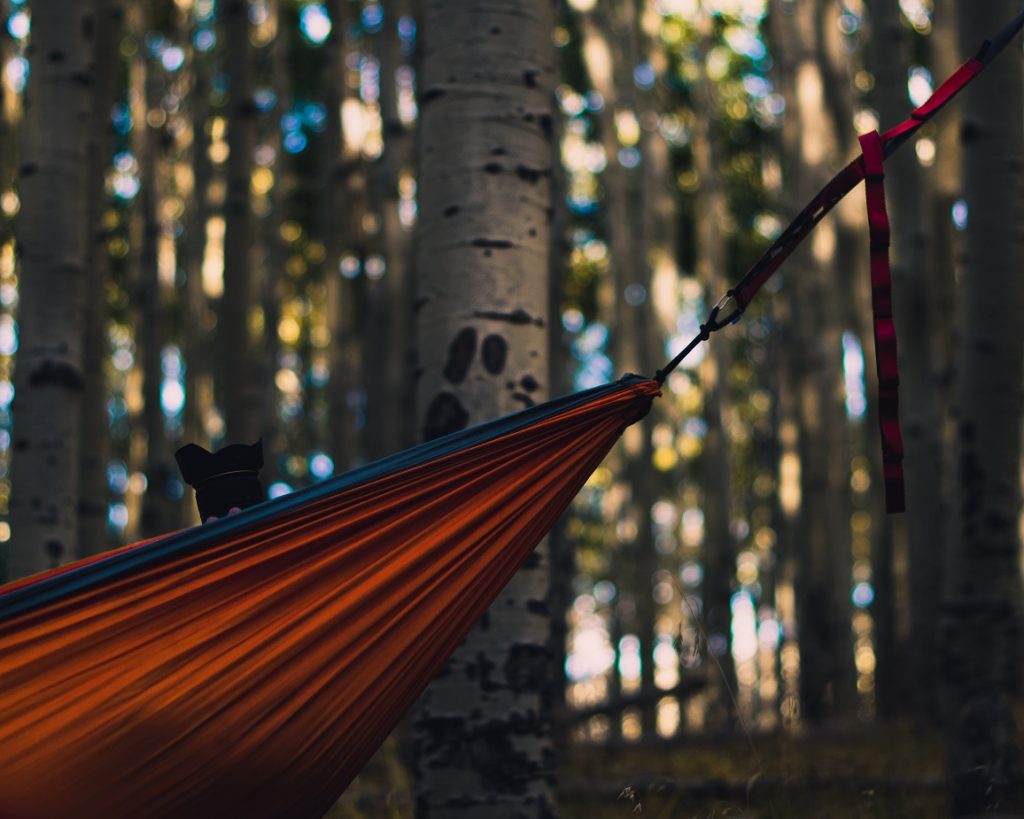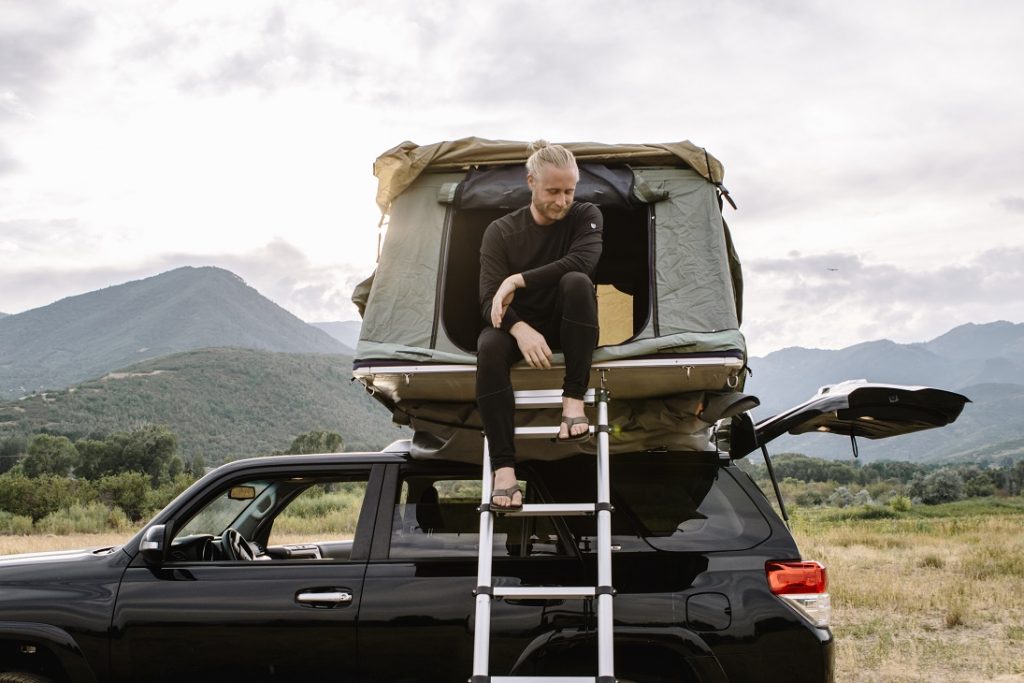- 1. How Hammocks Rise Above
- 1.1. More campsite options
- 1.2. You're high and dry
- 1.3. You're low and dry
- 1.4. Makes great camp seating
- 1.5. Rise above the cold sink
- 2. When Tents are on Solid Footing
- 2.1. You need the right trees
- 2.2. A considerable learning curve
- 2.3. Not always comfortable for belly- and side- sleepers
- 2.4. For solo campers or snuggle bunnies only
- 2.5. Some parks hamstring hammock use
- 3. Where Tents and Hammocks Share Common Ground
- 4. Hammock Styles and Add-ons
- 5. Ready to get into the swing of things?

Get Your Camping Season Off the Ground: The Essential Guide to Hammocks
Table of Contents [Show]
Back in 2016, my favorite tent finally went to that great meadow in the sky after more than a decade of active duty. I actually grieved. But as with the loss of a beloved pet, we eventually want to open our hearts to something new, and sometimes, something completely different. I'll never be a cat lady, but a few years ago I adopted a new hammock and once again, my heart is filled with joy.
Here's what I learned while exploring my options, pestering experienced hammock campers, and adjusting to this whole new approach to backpacking. It's a fairly basic overview, but one that I hope will prompt you to ask the right questions if you're thinking about making the switch.
How Hammocks Rise Above
Hit up hard-core hammock fans, and they'll be more than happy to tell you why their lofty lairs leave tent camping in the dust. In fact, their lists will go far beyond the five most-common benefits below, almost to the point where you're looking around their campsites for unicorns and rainbows.
More campsite options
How much time to you spend looking for a level spot free of rocks, vegetation, and roots? As long as you have two strong trees, you've got a place to crash for the night. No sliding down that previously-unnoticed slope, and none of those guilty feelings about tearing up or compressing the ground under your tent's footprint. Apparently this is a big deal on the Appalachian Trail, where thru-hikers report having to spend a lot of time finding the right place to pitch a tent.
You're high and dry
If you've set up a suitable hammock tarp, you're not going to wake up in a puddle if you're caught in a squall. I've found that with hammock systems, there's more ventilation up off the ground, and that tends to reduce condensation on the hammock itself and, on warm nights and late mornings, keep you cool and comfortable.
You're low and dry
You have the advantage of setting up your tarp before the hammock and the rest of your gear. This is handy in a downpour when you're dog-tired and you want a few minutes to dry off and change your clothes.
Makes great camp seating
Get your butt out of the dirt without packing a chair or getting your bed pad covered in pine sap. Hammocks double as comfortable "sling chairs" with room for a buddy. Some even have pockets to hold your favorite beverage!
Rise above the cold sink
This isn't something I see discussed that often on backpacking forums, but in rough, terraced terrain, cold air can pool into hollows. If you have ground clearance and the right insulating layers, you'll be warmer than if you were sleeping on the ground.

When Tents are on Solid Footing
Few things in this world are perfect, and hammocks do have a few drawbacks. Here are those that I've experienced, and that have been shared by fellow overnight and long-distance hikers. You all but need to feed them hooch to get them to admit these flaws, and they'll be looking over their shoulders for other hammock campers out of fear of being "jumped out" of the gang.
You need the right trees
Yeah, I know. Captain Obvious speaking. But what works in the Uintas probably won't work in the Canyonlands, where trees tend to be low and sparse if they exist at all. Above the treeline or in southern Utah slickrock country, most trees are in riparian areas or washes, which are either off-limits to hikers with strong Leave No Trace ethics or people who don't want to be drowned in a flash flood. Hold on to those terrestrial tents if you camp in diverse terrain.
A considerable learning curve
Think of it as the difference between dunking worms off a dock for bluegills and learning to cast a fly to a specific trout. There's a high "futz factor" to setting up the average backpacking hammock, at least the first several times.
Not always comfortable for belly- and side- sleepers
Some people simply can't sleep on their backs, or have to switch positions several times during the night. While this is a deal-breaker for a surprising number of hikers, many toughed it out until their bodies got used to it.
For solo campers or snuggle bunnies only
When you're hiking with a buddy, you can distribute two-person tent components between the two of you, but most hammock systems are designed for single sleepers. Two-person hammocks require you to be awfully friendly with your camp mate, especially if one of you is a light sleeper, and the other tends to get up in the middle of the night for trips to the loo.
Some parks hamstring hammock use
Some park rangers regard hammocks as harmful to trees. In 2018 there was a misunderstanding about Colorado Parks and Wildlife rules when a local news reporter interviewed a senior ranger for a feature on hammock camping. The ranger claimed hammocks weren't allowed, which turned out to be untrue. Do some homework while planning your trip to any state or National Park, and ask for an actual copy of the statutes. You'll learn about other important policies, and have a hard-copy on hand in case you're questioned.

Where Tents and Hammocks Share Common Ground
Contrary to popular belief, hammocks generally aren't lighter or cheaper than tents. At least, when you factor in add-ons and specific sleep systems. If you're replacing a worn-out tent, you might need to outfit yourself with a new one anyway, or at least rent or borrow one for those occasions when hammocks aren't appropriate.
You can use most traditional sleep accessories in a hammock, and vice-versa, especially if you've already adopted the practice of camping with a quilt instead of a traditional mummy bag.
Hammock Styles and Add-ons
I'm going to skip over the segment of aerial camping reserved for flat-bottom, suspended "tents" and rock-face sleep platforms for the sake of brevity, and I'm sure that there's at least one hammock company that will shake their fists in the air because I've left out their groundbreaking design. These are the hammocks you're most likely to find in the wild:
- Symmetrical: Both sides are parallel. Think "banana hammock" if you can do so without imagining middle-aged Europeans in Speedos.
- Asymmetrical: One side is higher than the other; you'll sleep more at an angle, and more evenly parallel to the ground.
- Hybrid ground/aerial hammocks: Typically modeled after one-piece bivvy sacks, though there are multiple designs on the market.
- Bridge: Instead of gathered ends, the straps attach to rigid cross-braces at the end for a flatter bottom.
- Three-point hammock: More of an elevated tent, these attach to three trees for a taught, flat-plane surface.
Any bare-bones hammock will get you through fair weather, especially if you're not concerned about bugs, but with the right add-ons, you can hang tough all year round.
- Top quilt: Allows for easier hammock entry and exit, and better distribute warmth and insulation than sleeping bags designed for the ground.
- Under-quilt: Attaches to the exterior underside to trap warm air and insulate against convection without loft compression.
- Mylar space blanket: A cheap, DIY alternative to the under-quilt for cool—but not cold—nights.
- Tarp: Supported by the same tie-point trees and by guylines, protects you from sun, rain, and moderate wind.
- Bug screen: A tented mesh structure affixed to the hammock and supported by various means.
- Hammock straps: Self explanatory; often sold separately from hammocks. Adjusts for widely-spaced trees.
- Sleeping pads: Made from the same materials as ground mats, these are designed to help distribute weight and add insulation to the bottom of your hammock.
- Strap ladder: A nifty accessory for those who need a little help climbing in.
- High-performance outdoor clothing from KÜHL: Because I'm singing for my supper, and I happen to love their clothes, especially their base layer bottoms, which are essential for comfortable hammock sleeping.
Don't be intimidated by hammock junkies who insist you buy every little thing on this list. Backcountry gearheads have blazed the DIY trail for you, just as they have with ultralight tent and tarp camping. Experiment during mild weather, or on shorter trips before you decide to buy hammock-specific accessories. The only items I personally insist upon are the tree-safe straps. The're easier on the ecosystem, and don't give other hammock users a bad name.
And the base layers. Climbing in and out of a bottom-entry hammock while nekkid is traumatizing for your fellow campers, and hammocks aren't the best changing rooms.)

Ready to get into the swing of things?
My advice is to rent or borrow different hammock styles and brands to decide which—if any—is right for you. Try out your hammock at home before you use it in the wild. Most hammocks require practice to get the right hang, but once you've got it down, you'll spend less time setting up camp than you would with a ground tent. And once you figure out how comfortable you are in a hammock, you'll spend more time out in the woods. Featured image by Bernard Hermant.


